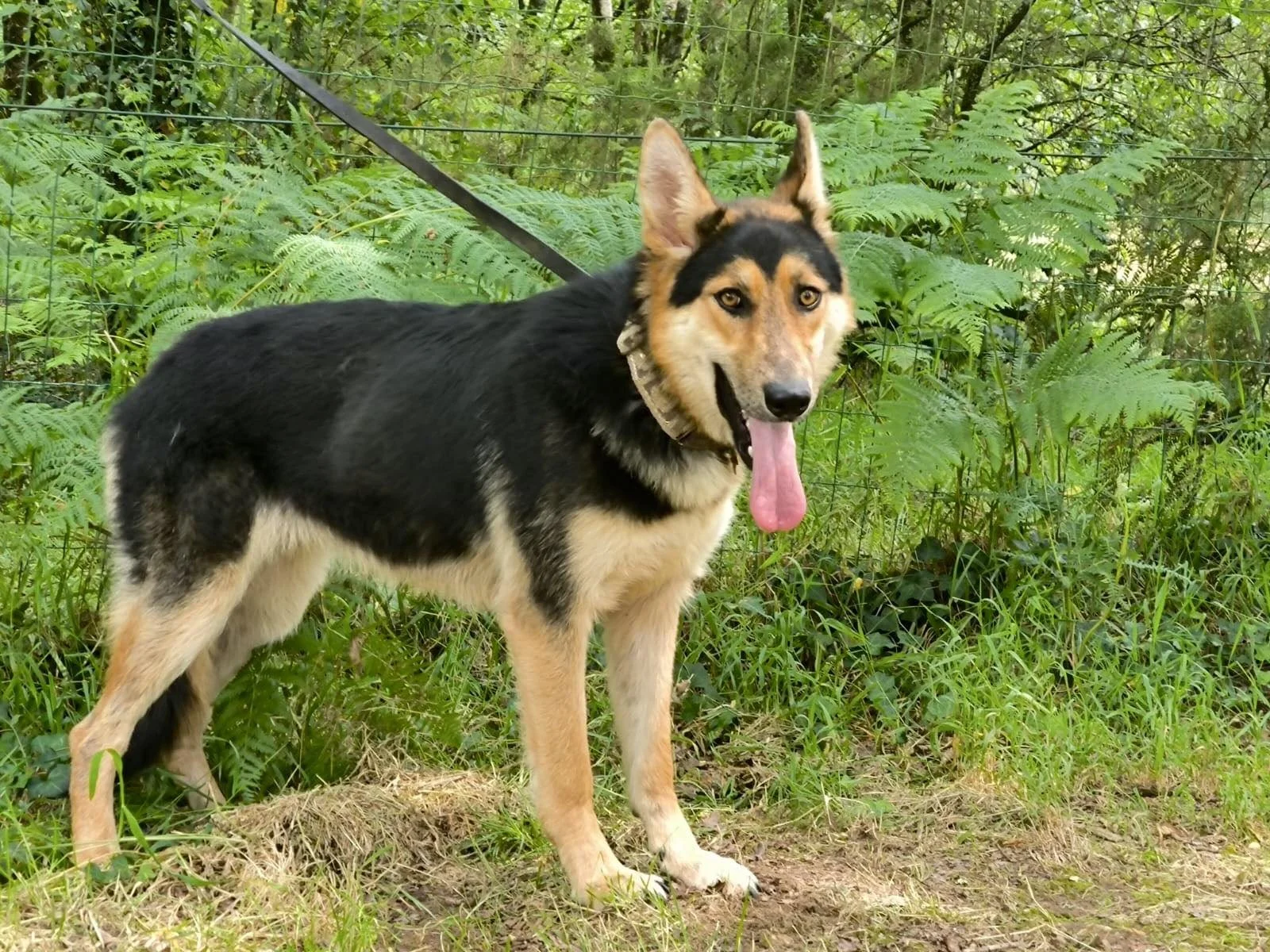Settling in a rescue dog
Bringing a rescue dog into your home, especially one from a different background like a Spanish shelter, is an exciting journey. Whether you have chosen to adopt a dog from Spain or elsewhere, read on!
Everything is new for the dog who may not have lived in a home before, understanding their subtle body language is key to being able to understand how they are coping and how you can help them.
In this blog post we will focus on deciphering some common, yet subtle, signs in your new Spanish rescue dog, while also acknowledging the significant adjustment period they're going through.
Why does a dog avert it’s head?
Unlike direct eye contact, which can be seen as a challenge in the canine world, a relaxed dog might meet your gaze briefly. However, if your dog quickly turns its head away, especially combined with flattened ears, a tucked tail, or a stiff body, it could indicate fear, anxiety, or even submission.
The term "whale eye" (or "half-moon eye") refers to a specific canine body language signal where the dog turns its head slightly away, but keeps its eyes fixed on something.
When an energetic puppy approaches my older dog to sniff his face, he may turn his head away from the pup. If the puppy continues to be all up in his face, he may move away or have a little grumble to verbally express that he needs more space.
Watch when dogs meet and have a lookout for one averting its head away from the other, it is giving signals to the other dog about how it feels.
What does it mean when a dog pants?
Panting is a natural way for dogs to regulate their body temperature. However, excessive panting, especially when not hot or after exercise, can indicate stress, anxiety, or even pain. If you see a dog panting but it has not been running about, it may well be uncomfortable with the situation it is in.
When a dog yawns does it mean it is tired?
Dogs do yawn when they are tired but that is not the only reason they do it. Yawning can be a sign of stress or anxiety in dogs. It can also be a way for them to self-soothe or show appeasement, especially in unfamiliar situations or when meeting new people or animals.
I was looking at stock photos for this blog, the first thing I thought here was “that dog is uncomfortable!”
What does it mean when a dog licks it’s lips?
Similar to yawning, lip licking can be a sign of appeasement or discomfort in dogs. If your dog licks their lips repeatedly while meeting new people or in unfamiliar situations, it's their way of trying to de-escalate and calm themselves down.
Why are my dogs ears down flat?
Floppy ears are adorable, but their position can also tell you a lot about your dog's mood. Relaxed, floppy ears indicate a happy and comfortable dog. However, flattened ears against the head can signal fear, submission, or even aggression. Observe the situation and other cues to differentiate what your dog’s ears are telling you.
Have you seen videos on the internet of dogs with young kids giving them cuddles and everyone saying how sweet it is? Watch for these signals and you will quickly see that the dog is uncomfortable and the videos are not adorable, but an incident waiting to happen.
Adjusting to a New Home
Remember, rescue dogs, especially those who have traveled from another country, are going through a major adjustment period. Their behaviour can vary greatly depending on their individual personality and past experiences. Here are some common behaviours you might observe during this time:
Disorientation and Stress:
Hiding
Pacing or restlessness
Whining or barking
Loss of appetite and thirst
Difficulty toileting
Exploration and Curiosity:
Sniffing around
Following you around
Playing
Other Potential Behaviours:
Fearfulness
Reactivity
Resource guarding
The "3-3-3 Rule":
It's often said that it takes a dog 3 days to decompress, 3 weeks to adjust to their new routine, and 3 months to fully settle in and feel like themselves. Be patient and understanding during this time.
How you can help your rescue dog
Give your dog a quiet, cosy space where they can feel safe and retreat to when they're overwhelmed. Be patient and understanding, remember, they are adjusting to a new environment, people, and routine and have just travelled for days to come home to you.
Over time you will be going to new places and trying new things, the key here is to push outside the dog’s comfort zone but be mindful that too much can cause the dog to become overwhelmed. Keep an eye on their body language and what they are trying to tell you.
Establish boundaries from the beginning, establishing yourself as a firm but fair leader from the beginning provides your rescue dog with the guidance and security they need. This helps build trust and fosters a positive, healthy relationship. Start simple and be consistent eg if you don’t want your dog on the furniture call them down and reward them with verbal praise or a treat when they get down.
Be patient, some dogs take to a new environment very quickly, for others it can take more time.
If you have any worries or concerns don't hesitate to reach out to the rescue that you have adopted your dog from. Everyone involved in rescue is there to help not only the dog but you as their owner. You are best to be open and honest when it comes to any issues you are having which in turn can prevent them from turning into bigger problems.
Adopt a dog from Spain
At Spanish Happy Tails Rescue UK we help rescue dogs from Spain find loving homes in the UK.
Adopting a dog from Spain is more straightforward than you might think, we deal with everything for you and with full Rescue Back Up, we are there for you from adoption and every day after that.




















